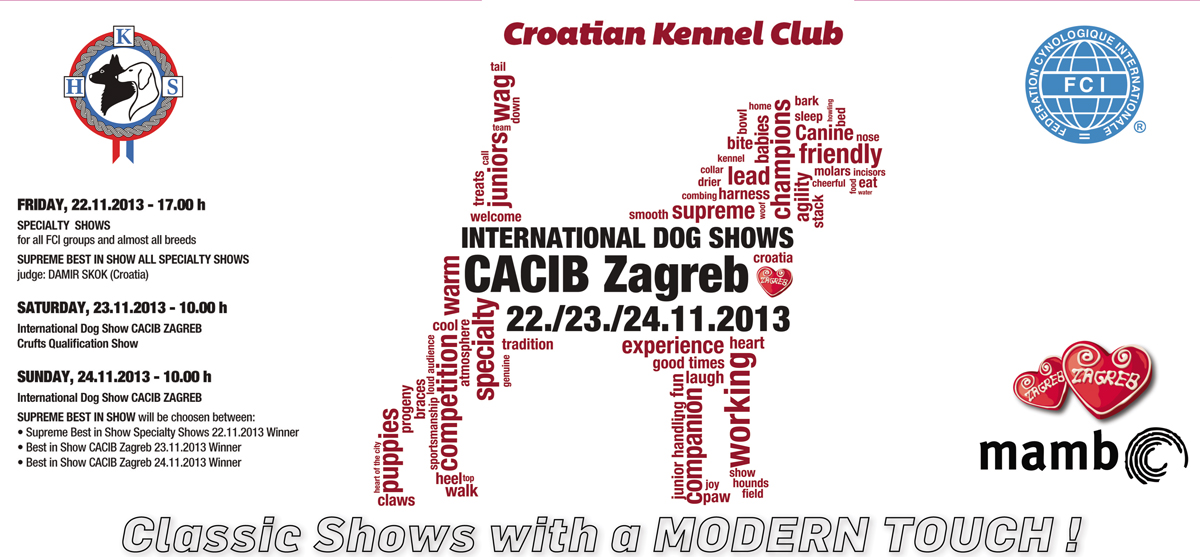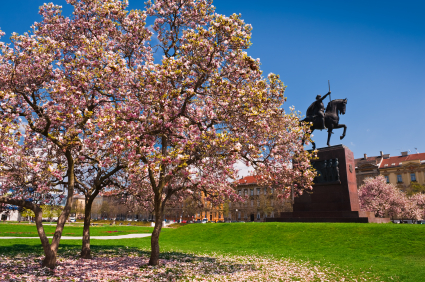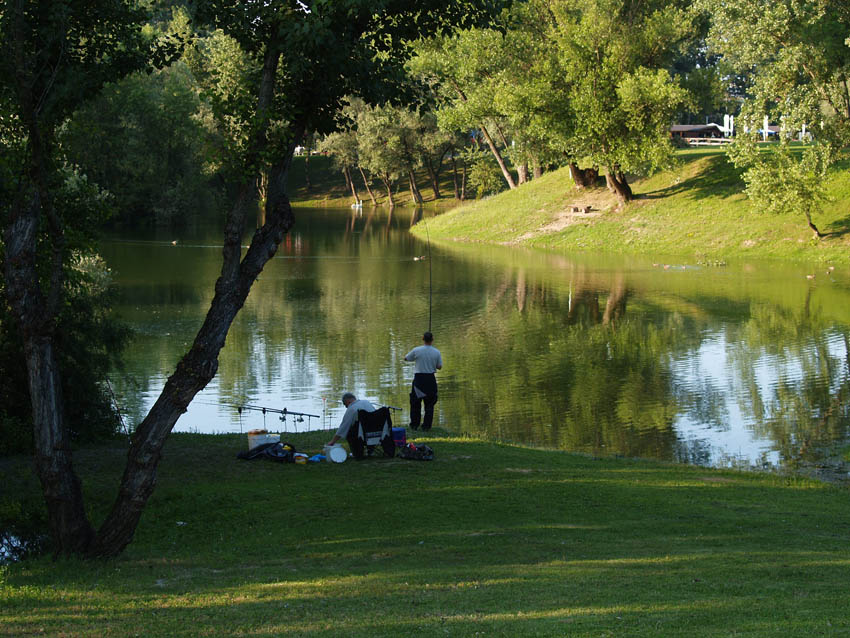 |
||||
|
|
|
|||
|
POČETNA HOME |
Dobro došli u Zagreb
Dobro došli u Zagreb, glavni grad Republike Hrvatske! Zagreb je
stari srednjoeuropski grad. Stoljećima se razvijao kao bogato
kulturno i znanstveno te snažno trgovačko i gospodarsko središte.
Nalazi se na sjecištu važnih prometnica između jadranske obale i
srednje Europe.
Za
turskih najezda na Europu, od XIV. do XVIII. stoljeća, Zagreb je
važna pogranična utvrda. Barokna obnova grada u XVII. i XVIII.
stoljeću mijenja obličje Gradeca i Kaptola. Ruše se stare drvene
kuće a podižu raskošne palače, samostani i crkve. Bogatstvu grada
pridonose brojni trgovački sajmovi, prihodi od posjeda i mnoštvo
obrtničkih radionica. U grad doseljavaju imućne plemićke obitelji,
kraljevi službenici, crkveni velikodostojnici i bogati trgovci iz
cijele Europe. Otvaraju se škole i bolnice, prihvaćaju se kulturni
običaji europskih prijestolnica. Grad prerasta svoje srednjovjekovne
granice i širi se prostranom ravnicom. Podižu se prvi perivoji i
ladanjska imanja. Zagreb se potvrduje kao upravno, gospodarsko i
kulturno središte Hrvatske.
|
|
Welcome to Zagreb Welcome to Zagreb, the capital city of the Republic of Croatia. Zagreb is an old Central European city. For centuries it has been a focal point of culture and science, and now of commerce and industry as well. It lies on the intersection of important routes between the Adriatic coast and Central Europe. When
the Croatian people achieved their independence in 1991, Zagreb
became a capital -
A Brief History of Zagreb Today's Zagreb has grown out of two medieval settlements that for centuries developed on neighbouring hills. The first written mention of the city dates from 1094, when a diocese was founded on Kaptol, while in 1242, neighbouring Gradec was proclaimed a free and royal city. Both the settlements were surrounded by high walls and towers, remains of which are still preserved. During the Turkish onslaughts on Europe, between the 14th and 18th centuries, Zagreb was an important border fortress. The Baroque reconstruction of the city in the 17th and 18th centuries changed the appearance of the city. The old wooden houses were demolished, opulent palaces, monasteries and churches were built. The many trade fairs, the revenues from landed estates and the offerings of the many craft workshops greatly contributed to the wealth of the city. Affluent aristocratic families, royal officials, church dignitaries and rich traders from the whole of Europe moved into the city. Schools and hospitals were opened, and the manners of European capitals were adopted. The city outgrew its medieval borders and spread to the lowlands. The first parks and country houses were built. Zagreb confirmed its position as the administrative, cultural and economic centre of Croatia. When Kaptol, Gradec and the surrounding settlements were administratively combined into the integrated city of Zagreb in 1850, the development accelerated still more. The disastrous earthquake of 1880 sparked off the reconstruction and modernization of many shabby neighbourhoods and buildings. Prestigious public buildings were erected, parks and fountains were made, and transportation and other infrastructures were organized. In the 19th century the population increased tenfold. The twentieth century brought the Secession style to Zagreb. The city lived in the plenty of a civil society, with firm links with all the central European centres. With an increase in wealth and industry from the 1960s on, the city spread out over the wide plains alongside the Sava River, where a new, contemporary business city has develop.
|
|
|
O ZAGREBU ABOUT ZAGREB |
||||
|
SUCI JUDGES |
||||
|
SPECIJALNE IZLOŽBE, 22.11.2013. SPECIAL DOG SHOW, 22.11.2013. |
||||
|
CACIB ZAGREB subota / saturday, 23.11.2013. |
||||
|
CACIB ZAGREB nedjelja / sunday, 24.11.2013. |
||||
|
ŽIVOTOPISI SUDACA JUDGES CV |
||||
|
PROGRAM IZLOŽBE SHOW SCHEDULE |
||||
|
MJESTO IZLOŽBE SHOW PLACE |
||||
|
IZLOŽBENI RED SHOW REGULATION |
||||
|
ROKOVI PRIJAVE ENTRY DEADLINES |
||||
|
SUPREME BEST IN SHOW |
||||
|
UPISNINA ZA CACIB IZLOŽBE ENTRY FEE FOR CACIB SHOWS |
||||
|
NAČIN UPLATE METHOD OF PAYMENT |
||||
|
PRIJAVNICA ENTRY FORM |
||||
|
SLANJE PRIJAVNICA SENDING ENTRIES |
||||
|
INFORMACIJE INFORMATION |
||||
|
SPECIJALNE IZLOŽBE SPECIALTY SHOWS petak / friday, 22.11.2013. |
||||
|
|
||||
|
|
HRVATSKI KINOLOŠKI SAVEZ // CROATIAN KENNEL CLUB |
|||




